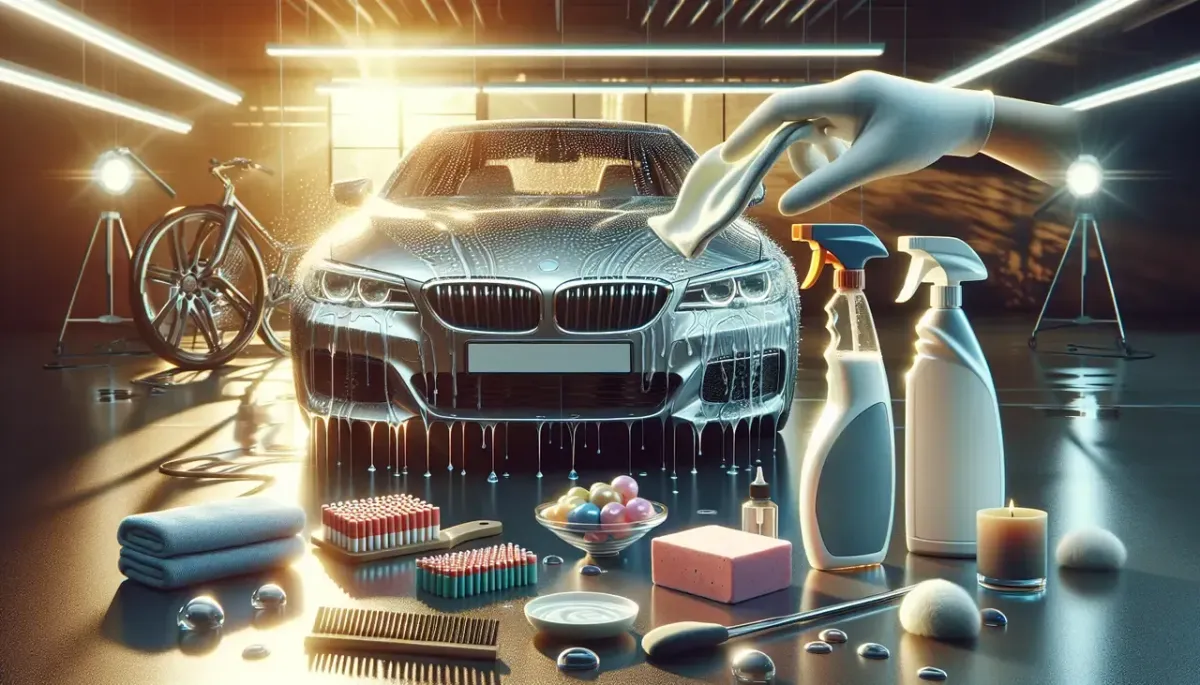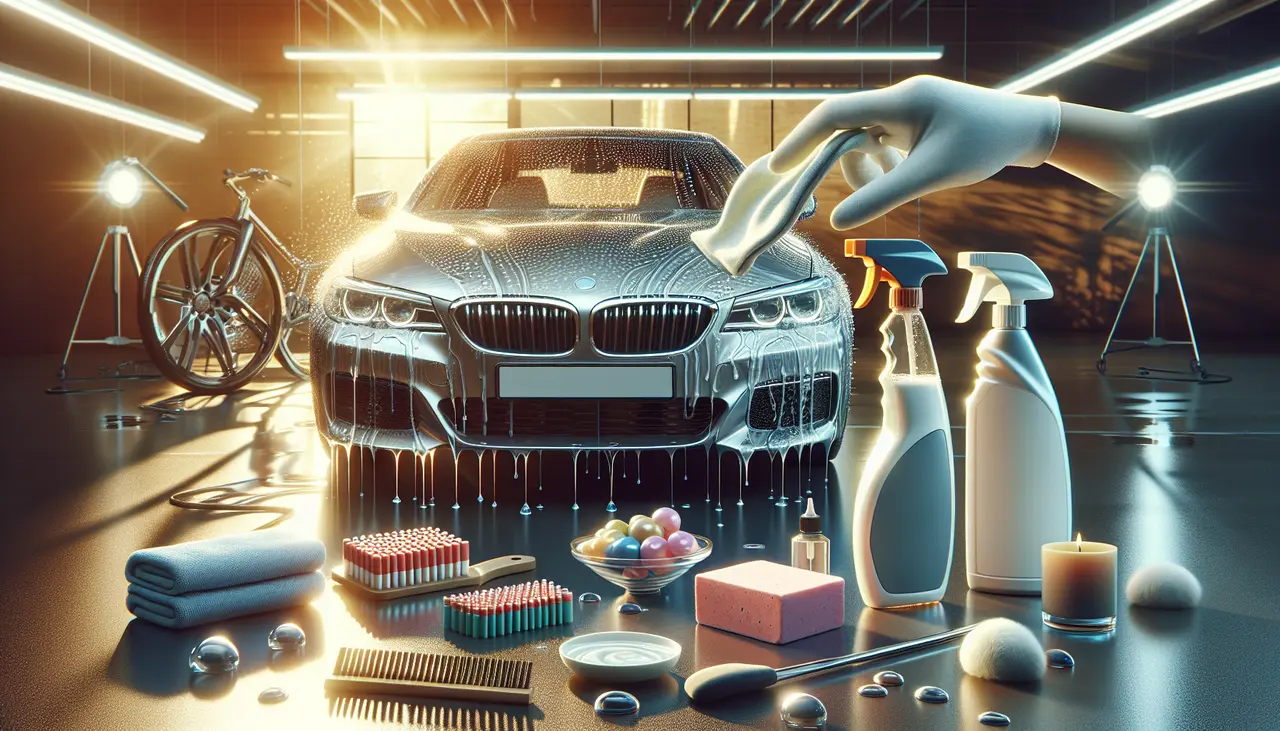My Awesome Detailer, LLC
My Awesome Detailer, LLC's Blog
"Auburn Alabama's #1 Resource for Ceramic Coating & Auto Detailing Information"

Top-Rated & Reviewed!

"Paint Protection Film Maintenance: Tips to Keep Your Car Looking Flawless"
Maintaining your car's paint protection film (PPF) is essential to keep your vehicle looking pristine and to extend the life of the film. In this blog, we'll walk you through some easy and effective tips to ensure your car's PPF remains in top-notch condition.

Understanding Paint Protection Film
Paint protection film, also known as PPF, is a thin, transparent layer that is applied to a car's exterior. It helps protect the paint from scratches, chips, and environmental damage. Knowing the basics about PPF can help you understand why maintenance is so crucial.
PPF acts as a protective shield, absorbing the impacts that might otherwise damage your car's paint. It's designed to be flexible, durable, and virtually invisible, preserving the sleek appearance of your vehicle while providing robust protection. This can be particularly beneficial for those who drive frequently or park their car outdoors.
One of the significant advantages of PPF is that it has self-healing properties. Minor scratches and scuffs can disappear with heat from the sun or a gentle application of warm water. However, proper maintenance is essential to ensure the self-healing feature remains effective over time.
Washing Your Car with Paint Protection Film
It’s important to wash your car regularly, but doing so gently is key to preserving your PPF. Use a microfiber cloth and pH-balanced car soap. Avoid abrasive materials and automated car washes that might damage the film.
When washing a car with PPF, it's vital to use the right techniques to avoid any potential damage. Refer to the 7 Tips for How To Wash a Car With PPF and Ceramic Coating for detailed steps. First, rinse off loose dirt with water before applying any soap. This reduces the risk of scratches from dirt particles.
Using a two-bucket method can be beneficial. One bucket holds the soapy water, while the other is filled with clean water for rinsing your wash mitt. This method helps prevent dirt from getting back on the mitt and scratching your car. Gently wash one section at a time, and be sure to keep the wash mitt clean.
Make sure to wash your car in the shade or when it's cool outside. Washing in direct sunlight or on a hot surface can cause soap to dry quickly, which might lead to water spots or residue. Always rinse thoroughly and dry promptly to maintain the integrity of the PPF.
Drying Techniques for PPF
After washing, drying your car properly will prevent water spots and streaks. Use a soft towel or a specialized car drying cloth. Be sure to blot or pat dry rather than wiping, to avoid scratching the PPF.
Using a waffle-weave towel or an air blower is highly recommended. Air blowers can effectively remove water from hard-to-reach areas without causing any scratches. If you choose towels, ensure they are clean and free from any debris. Keep a separate towel just for drying to avoid contamination.
Remember not to rush the drying process. Take your time to ensure all water is removed, especially from gaps around the edges and seams. This will help prevent any moisture-related issues in the long run. Proper drying can make a significant difference in maintaining the clarity and adhesion of the PPF.
Avoiding Common Hazards
Environmental factors like bird droppings, tree sap, and bug splatter can harm your PPF. Clean these off as soon as possible using a mild cleaning solution designed for cars, ensuring that you do not use harsh chemicals.
Keeping a quick detailer spray and a microfiber cloth in your car can be extremely handy for such situations. Whenever you notice any contaminants, spraying the area and gently blotting can prevent any potential damage. Make sure to treat the surface as soon as possible to avoid any lasting effects from these acidic contaminants.
It's also advisable to park your car in a garage or use a car cover, especially if you know the vehicle will be stationary for long periods. This preventive measure can protect your car from falling debris, sap, and other environmental hazards that pose a threat to the PPF.
Inspecting and Repairing Your PPF
Regularly inspect your paint protection film for any signs of wear or damage. If you notice small areas of peeling or bubbling, address them promptly. Professional services can often repair minor damages without needing to replace the entire film.
Regular inspections are crucial. Look for issues like yellowing, peeling edges, or bubbling under the film. High-temperature exposure and improper washing techniques can exacerbate these conditions. Timely intervention can prevent small issues from becoming major problems.
In some cases, a partial patch or reapplication of the PPF might be necessary. Consulting a professional is the best way to ensure the integrity of the film is maintained. They can offer repair solutions that blend seamlessly with the existing film, preserving the overall appearance of your car.
Applying Protective Products
There are products specifically designed to protect and enhance PPF, such as sealants and surface coatings. Applying these can add an extra layer of protection and help maintain the film's appearance.
Sealants and coatings can provide a water-repellent surface, reducing the impact of contaminants. For maximum benefits, consider applying a Ceramic Coating on top of your PPF. This combination offers enhanced protection against scratches, chemical damage, and UV rays.
It's crucial to avoid using wax on your PPF, as wax can cause buildup along the film's edges. This can lead to unsightly lines and potential peeling over time. Instead, stick to protective sealants recommended for PPF, which are designed to work harmoniously with the film.
Regular application of these products, following the manufacturer's guidelines, ensures that the PPF remains in optimal condition. Not only will this keep your car looking flawless, but it also extends the longevity of the PPF, saving you from frequent replacements.
Keep Your Paint Protection Film in Peak Condition
By following these simple yet effective maintenance tips, you can ensure that your car's paint protection film remains in excellent condition for years to come. Taking a little extra care will keep your vehicle looking brand new and preserve its value.

My Awesome Detailer was founded with one mission: to bring elite-level vehicle protection and detailing to Auburn, AL and beyond.
Since day one, our focus has been delivering long-lasting paint enhancement, value retention, and top-tier appearance protection —with zero compromises.
We believe that true automotive care starts with clear communication and customized solutions, tailored to the specific needs of each vehicle and owner. From professional-grade ceramic coatings and self-healing paint protection film to precision paint correction and full-vehicle detailing, every service we offer is designed to elevate, protect, and preserve your investment.
At My Awesome Detailer, you don’t just get a clean car—you get long-term peace of mind and a finish worthy of a showroom spotlight.
Contact Info & Address
2709 Frederick Road, Opelika AL 36801
(334) 650-6499
Working hours
Monday: 8am-5pm
Tuesday: 8am- 5pm
Wednesday: 8am - 5pm
Thursday: 8am - 5pm
Friday: 8am - 5pm
Saturday: 8am-5pm
Sunday: Gone Fishin'
All Services by Appointment Only
Map
@ 2025 Copyright. MAD, LLC All rights reserved.
